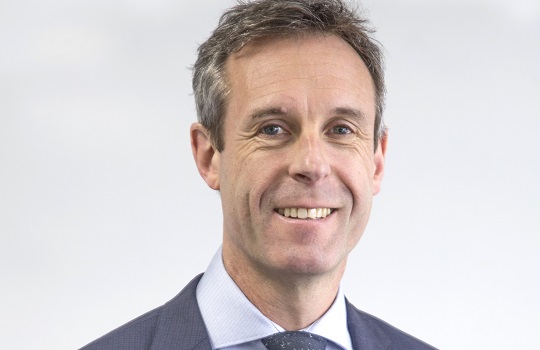
“We are moving from an agency-centric model to one that puts people and the wider public sector first. We are deliberately choosing to work collaboratively with agencies to build understanding, rather than taking an interventionist approach.”
FST Government: As Government Chief Digital Officer, you play a decisive role in driving government innovation and change. Take us through some of the key objectives of your role.
James: As GCDO, my role is to drive government’s digital transformation and position government to be responsive in a changing digital age. My role is about central leadership – to think about how the system operates and how we can join things up to keep the public at the centre of everything we do.
We need collective leadership for the common good. All government departments have roles to play, and our role is in setting up, coordinating, advising, and ensuring the right building blocks are in place to enable them to be successful.
FST Government: Implementing a comprehensive, whole-of-government digital program across a diversity of public agencies – often with varying levels of digital competence, preparedness, and resources – remains a longstanding challenge for centralising authorities. How have you sought to address this challenge?
James: It is certainly a challenge. We are asking individual agencies to make a shift away from how they’ve been operating and offering services for 30 to 50 years, before the internet and digital technologies changed the way we provide services. Now, we are moving from an agency-centric model to one that puts people and the wider public sector first. We are deliberately choosing to work collaboratively with agencies to build understanding, rather than taking an interventionist approach.
We are currently developing a Strategy for a Digital Public Service to grow a public service that can react quickly, navigate change and, importantly, deliver better outcomes for New Zealanders.
FST Government: The Digital Government Partnership is at the heart of New Zealand’s transformation program. How important is the Partnership in advancing integration and fostering a culture of digital innovation within the public sector?
James: The Government Chief Data Steward and I chair the Digital Government Leadership Group, which is part of the Digital Government Partnership. It’s a group of 13 senior public sector chief executives tasked with working together to drive transformative change across government. It’s a really important group because we work together on system issues to unblock the blocks and the things that collectively affect government. We want to provide clarity about our priorities and consider how we can meet New Zealanders’ needs by putting the right foundations in place.
I also work with central agencies like Treasury and the State Services Commission, and other cross-government functional leads including property and procurement.
FST Government: Entrenched or long-serving public service employees can sometimes be resistant to digital transformation efforts. How can the public sector be encouraged to join a digital transformation journey and be inspired to progress change initiatives?
James: People who work in the public sector have a commitment to do their best for New Zealanders, and we want to make that easier for them. We’re focusing on putting the right building blocks in place, and as agencies start using these building blocks, for example, our work around digital identity, and with Treasury on digital investment, will help them to change the way they work.
Traditionally government services were designed around our own service lines and organisational resources. But our services should meet the public’s needs, not ours (and that’s what they expect), so we must design our services around their lives. That’s an exciting and compelling driver for change.
FST Government: Service integration between agencies remains a key goal for many governments. However, the ability to freely exchange information between agencies can, without due diligence, also increase the risk of exposing sensitive citizen data. How can governments effectively unify services whilst still protecting people’s information?
James: New Zealanders need to feel safe and protected if they are to engage in this increasingly digital world, with their rights and dignity guarded and defended. The focus of our digital rights program is on safety, trust, and protection, and looks at ethics, digital rights (including privacy, control of information, freedom of speech, ensuring people are safe from misinformation, and due process is followed online), and social licence.
All of our digital solutions are built using privacy-by-design principles. New Zealand also has a Government Chief Privacy Officer whom I work closely with, in addition to having strong working relationships with the Government Chief Data Steward and the Government Chief Information Security Officer.
FST Government: Inspiration often comes from unlikely corners. Which fellow government (or non-government organisations) do you look to as a model for NZ’s future digital government?
James: Every country has a very different operating context. We would never take a whole solution from another government because we are respectful of preserving our culture as New Zealanders and we need to consider how what we do will impact on our society. For example, other countries do not have a Te Ao Māori approach and, unlike many other countries, we do not have a population registry.
New Zealand is committed to joining forces with other countries which are committed to progressing digital government, such as the Digital 9. This gives us the opportunity to share tools, opportunities, and experiences as we develop our own models.
FST Government: Digital transformation is ultimately citizen-centric endeavour, facilitating greater and more fruitful interactions between government and its citizens. Over the next 18 months, what do you consider will most advance citizen engagement with government?
James: Digital rights and digital inclusion are critical foundations of our digital transformation approach. We need to get this right so New Zealanders continue to have the confidence to engage with government.
As I’ve said before, it is essential that New Zealanders feel safe and protected if they are to engage in this increasingly digital world, with their rights and dignity guarded and defended. Digital technologies also have the power to amplify and create inequalities that exist in our society. People who aren’t digitally included are often at a social and financial disadvantage – affecting their wellbeing and our economy. I’m proud to champion Te Mahere mō te Whakaurunga Matihiko – our Digital Inclusion Blueprint that we released in May, which sets a vision for a country where everyone has the ability to participate in and benefit from a digital world.
Paul James will be a featured keynote presenter at the FST Government New Zealand conference in Wellington on the 28 August, 2019.





